| Guerillas in Pink Lace | |
|---|---|
| Directed by | George Montgomery |
| Written by | Ferde Grofé Jr George Montgomery |
| Produced by | George Montgomery |
| Starring | George Montgomery |
| Cinematography | Emmanuel I. Rojas |
| Edited by | Kenneth Crane |
| Music by | Gene Kauer |
Production company | Mont Productions |
Release date |
|
Running time | 96 minutes |
| Country | Philippines |
| Language | English/Japanese |
Guerillas in Pink Lace is a 1964 Philippine Techniscope comedy set during the invasion of the Philippines during World War II. The film starred George Montgomery who also produced, directed and co-wrote the screenplay as well as featuring his own father in a role as a Priest.
American expatriate gambler Murphy's luck is running from bad to worse. Twenty seven days after the attack on Pearl Harbor Murphy has lost his fortune in a high-stakes poker game, is beaten up by some of his many creditors and is trapped in the Philippines during the Japanese invasion. He is comforted by an elderly priest Fr Osgood who laments the fact that he has a pass to ride on a United States Army Air Forces DC-3 evacuating American civilians to Australia when he would rather minister to the troubled souls who will be left behind to face the Japanese. Murphy supports the priest in his decision by allowing the priest to give him his pass so Murphy can escape to Australia. He gleefully dons a pair of spectacles and a cassock to impersonate the 74-year-old priest.
At the same hotel as Murphy and the priest are a troupe of exotic dancers who have scored similar passes due to one of them having sexual relations with a US Army Lieutenant Colonel who had the power to issue the passes. Facing the wrath of the many Americans unable to leave, they decide to avoid hostility by travelling with Murphy, thinking he is an actual priest; despite the fact that he never wears his cassock correctly and carries a M1911A1 .45 calibre pistol in a shoulder holster.
Murphy's bad luck returns when their plane is shot down by the Japanese. With the survivors separating during the night, Murphy awakes to find himself on a life raft with the five dancers. They come ashore on one of the many small Philippine islands. Murphy soon discovers a Japanese radio station but his reconnaissance leads him to believe that the post is only manned by two idiots. The party's luck changes when Murphy finds a suitable hiding place, a large supply of fresh fruit and water with Murphy able to enter the Japanese outpost to steal food and make a distress call to the US Navy. Their luck turns to bad again when Murphy finds a large company of Japanese troops. When they are discovered, Murphy and the girls decide to give the Japanese a party they will never forget with the dynamite they discover in a supply building.
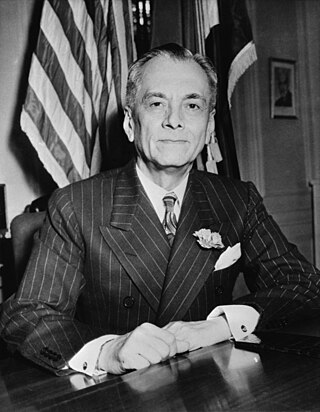
Manuel Luis Quezon y Molina, also known by his initials MLQ, was a Filipino lawyer, statesman, soldier, and politician who was president of the Commonwealth of the Philippines from 1935 until his death in 1944. He was the first Filipino to head a government of the entire Philippines and is considered the second president of the Philippines after Emilio Aguinaldo (1899–1901), whom Quezon defeated in the 1935 presidential election.
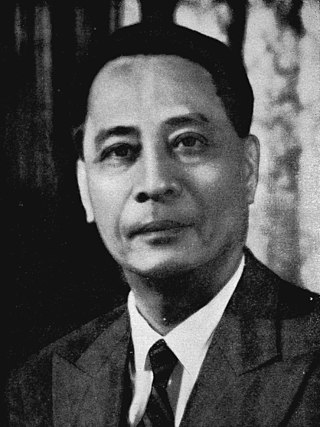
Manuel Acuña Roxas was a Filipino lawyer and politician who served as the fifth President of the Philippines from 1946 until his death in 1948. He served briefly as the third and last President of the Commonwealth of the Philippines from May 28, 1946, to July 4, 1946, and became the first President of the Independent Third Philippine Republic after the United States ceded its sovereignty over the Philippines.

Luis Mangalus Taruc was a Filipino political figure and rebel during the agrarian unrest of the 1930s until the end of the Cold War. He was the leader of the Hukbalahap group between 1942 and 1950. His involvement with the movement came after his initiation to the problems of agrarian Filipinos when he was a student in the early 1930s. During World War II, Taruc led the Hukbalahap in guerrilla operations against the Japanese occupants of the Philippines.

Ride the Pink Horse is a 1947 film noir crime film produced by Universal Studios. It was directed by Robert Montgomery, who also stars in it, from a screenplay by Ben Hecht and Charles Lederer, which was based on the 1946 novel of the same title by Dorothy B. Hughes. Thomas Gomez was nominated for a Best Supporting Actor Oscar for his performance.

Cabuyao, officially the City of Cabuyao, is a 1st class component city in the province of Laguna, Philippines. According to the 2020 census, it has a population of 355,330 people.

Corella, officially the Municipality of Corella, is a 5th class municipality in the province of Bohol, Philippines. According to the 2020 census, it has a population of 9,479 people.
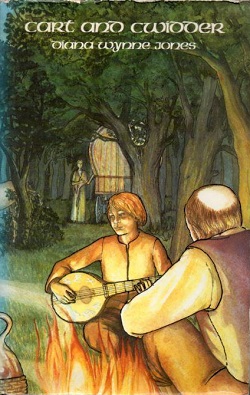
Cart and Cwidder is a fantasy novel for young adults by the British author Diana Wynne Jones. It is the first book published in the Dalemark Quartet, although chronologically it is the third in the series, coming in time hundreds of years after The Spellcoats and a year or so after Drowned Ammet.

Santa Maria, officially the Municipality of Santa Maria, is a 2nd class municipality in the province of Laguna, Philippines. According to the 2020 census, it has a population of 34,511 people.

San Teodoro, officially the Municipality of San Teodoro, is a 4th class municipality in the province of Oriental Mindoro, Philippines. According to the 2020 census, it has a population of 19,121 people, making it the least populated municipality in the province.
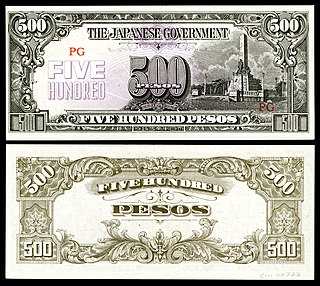
During World War II in the Philippines, the occupying Japanese government issued a fiat currency in several denominations; this is known as the Japanese government-issued Philippine peso. The Japanese government outlawed possession of guerrilla currency, and declared a monopoly on the issuance of money, so that anyone found to possess guerrilla notes could be arrested or even executed.

Mariano Gómes de los Ángeles, often known by his birth name Mariano Gómez y Custodio or Mariano Gomez in modern orthography, was a Filipino Catholic priest who was falsely accused of mutiny by the Spanish colonial authorities in the Philippines in the 19th century. He was placed in a mock trial and summarily executed in Manila along with two other clergymen collectively known as the Gomburza. Gomes was the oldest of the three priests and spent his life writing about abuses against Filipino priests.
Vaudeville in the Philippines, more commonly referred to as bodabil, was a popular genre of entertainment in the Philippines from the 1910s until the mid-1960s. For decades, it competed with film, radio and television as the dominant form of Filipino mass entertainment. It peaked in popularity during the Japanese occupation in the Philippines from 1941 to 1945. Many of the leading figures of Philippine film in the 20th century, such as Dolphy, Nora Aunor, Leopoldo Salcedo and Rogelio de la Rosa, began their showbusiness careers in bodabil.
Cebu is a 1991 novel by Filipino American author Peter Bacho the "most visible figure" of second-generation, native-born Filipino American writing and one of several Seattle novelists in the 1990s to explore the racial history and sociology of Seattle. The novel is also "the first novel about a Filipino American who identifies primarily with US localities," rather than with the Philippines.

Oro, Plata, Mata is a 1982 Philippine historical war drama film co-written and directed by Peque Gallaga. The screenplay written and adapted by José Javier Reyes was based on the story by Gallaga, along with Mario Taguiwalo and Conchita Castillo. The film is considered to be Gallaga's most significant contribution to the Philippine cinema. Set in the Philippine island of Negros during World War II, it tells the story of how two hacendero families cope with the changes brought about by the war. In translation, the movie is also known either as "Gold, Silver, Bad Luck" or "Gold, Silver, Death."

Tatlong Taong Walang Diyos is a 1976 Filipino period film written and directed by Mario O'Hara that set in the province of Laguna during the Second World War. The film stars Nora Aunor as the barrio lass Rosario, Christopher De Leon as the Japanese-Filipino army officer Masugi, and Bembol Roco as the army guerilla member Crispin.
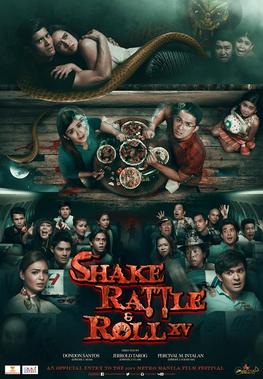
Shake, Rattle & Roll XV is a 2014 Filipino horror anthology film directed by Dondon Santos, Jerrold Tarog, and Perci Intalan, and the fifteenth installment of the Shake, Rattle & Roll film series. The film stars an ensemble cast including Erich Gonzales, JC de Vera, Carla Abellana, Dennis Trillo, Lovi Poe, Matteo Guidicelli, and John Lapus.
Jesus Gonzalo Barrera y Alimurung was a Filipino lawyer served as 67th Associate Justice of the Supreme Court of the Philippines from 1959 to 1966.

The military career of former Philippine President Ferdinand Marcos during World War II has been the subject of debate and controversy, both in the Philippines and in international military circles. Marcos, who had received ROTC training in the University of the Philippines, was activated for service in the US Armed Forces in the Philippines after the attack on Pearl Harbor. He served as a 3rd lieutenant during the mobilization in the summer and fall of 1941, continuing until April 1942, after which he was taken prisoner. According to Marcos' account, he was released from prison by the Japanese on August 4, 1942, and US military records show that he rejoined USAFIP forces in December 1944. Marcos' military service then formally ended with his discharge as a major in the 14th Infantry, US Armed Forces in the Philippines Northern Luzon, in May 1945.
When the Elephants Dance is a historical fiction novel written by Tess Uriza Holthe and published in 2002. It is set in February, 1945 in the Philippines during the final week of the battle for control between the Americans and the Japanese during World War II. The story is divided into four parts, each told from a character's perspective and detailing events that occur in the moments leading up to the Japanese surrender. Within each part are multiple short stories that contain mythological elements and important themes of unity and loyalty and the downfall of innocence.
Hilario "Dodong" Abellana y Hermosa was Filipino Visayan lawyer, politician and legislator from Cebu, Philippines. He was the municipal president of Cebu (1922–1931), a member of the House of Representatives (1934–1935), a two-term member of the National Assembly (1935–1941), and provincial governor of Cebu during World War II (1941–1943). After his escape and eventual captivity, he was executed by the Japanese Imperial Army and the resting place of his remains is still unknown.